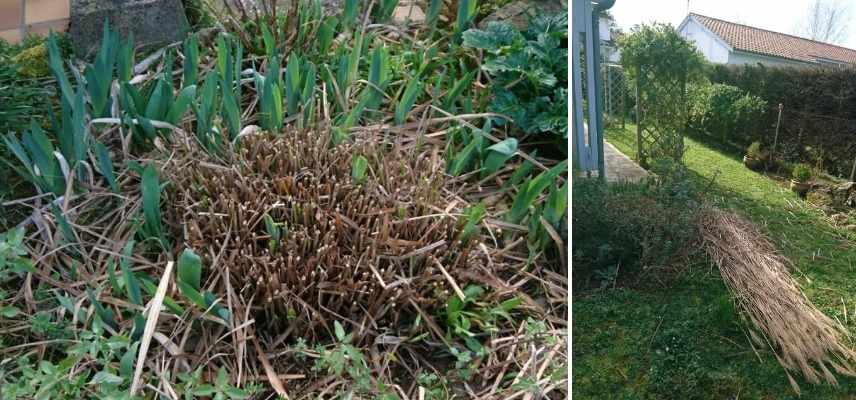People often say Miscanthus require no maintenance... Yet you still need to carry out an annual pruning to ensure they look superb in the garden. When and how should you prune these majestic grasses? We explain in detail and with images.
Why pruning miscanthus?
Whether very tall or modest in size, or even grown in a container on the terrace, all Miscanthus are pruned ! Their clumps, which take on beautiful colours in autumn and turn tawny in winter, decorate garden through cold months, but they should be removed so new shoots can form easily. Pruning therefore stimulates new shoots and increases plant growth, especially during first three years after planting while Miscanthus establishes.
Without pruning, Miscanthus of any variety will look much less tidy, and presence of old dry stems slows good growth as spring arrives.

When to prune miscanthus?
Do not be tempted to prune too early. Miscanthus are grown, as explained above, for their striking presence and incomparable silhouette during winter months! Pruning season for Miscanthus coincides with period just before growth resumes, late winter, between early and late March depending on region: you will see first young leaves emerging from soil among dry vegetation. Do not wait until green shoots within the clump become too developed, or you will deprive plant of many future flowering stems. To avoid mistakes, monitor your Miscanthus from March onwards!

How to prune miscanthus?
Again, same rule for all types of Miscanthus, whatever their size, cultivation method or age: cut vegetation back to ground level, maximum 15 cm, just before vegetation restarts. Equip yourself with a shear for finer varieties and a pruning shear or a heavy‑duty pruning shear for thicker or older varieties. Work in stages, starting around perimeter of the clump for Miscanthus that have already built up good volume and for more established plants, then cut dry vegetation towards centre. Of course, pruning tools should be sharp and blades disinfected with alcohol.

Rather than making a blunt, brush-like cut, try to soften edges by shaping a rounded cut, which will be more attractive.
Finally, if you have a long attractive avenue of Miscanthus to maintain, use a hedge trimmer, which will make job quicker, but do this a little earlier in late February to avoid cutting into any emerging young shoots.

What to do with pruning residues?
Do not throw away this valuable material! Cut stems can be recycled as mulch for garden, often handy in vegetable patch. You should recut all dry stems with a sharp pruning shear, or pass them through a shredder, ensuring they are very dry and cutting them lengthwise to avoid clogging. Also make sure your shredder accepts this type of material (rotor shredders are better suited).
Read about this: Miscanthus mulch: advantages and disadvantages?
































Comments